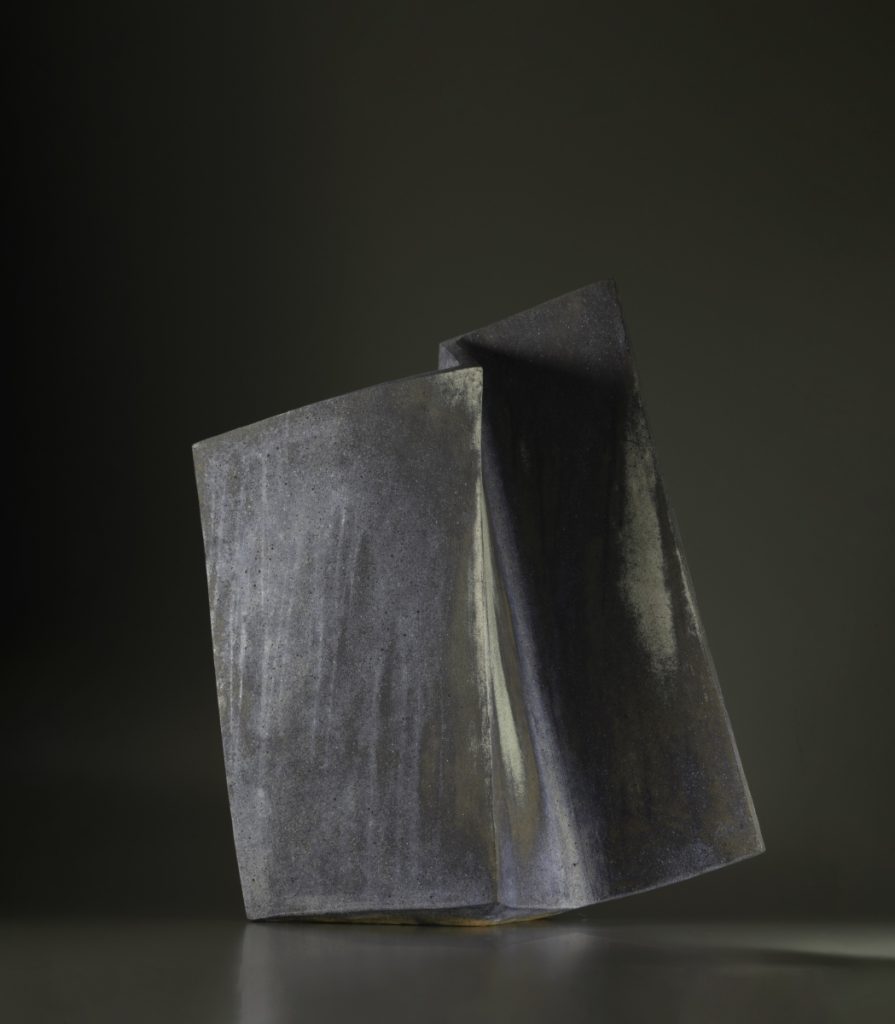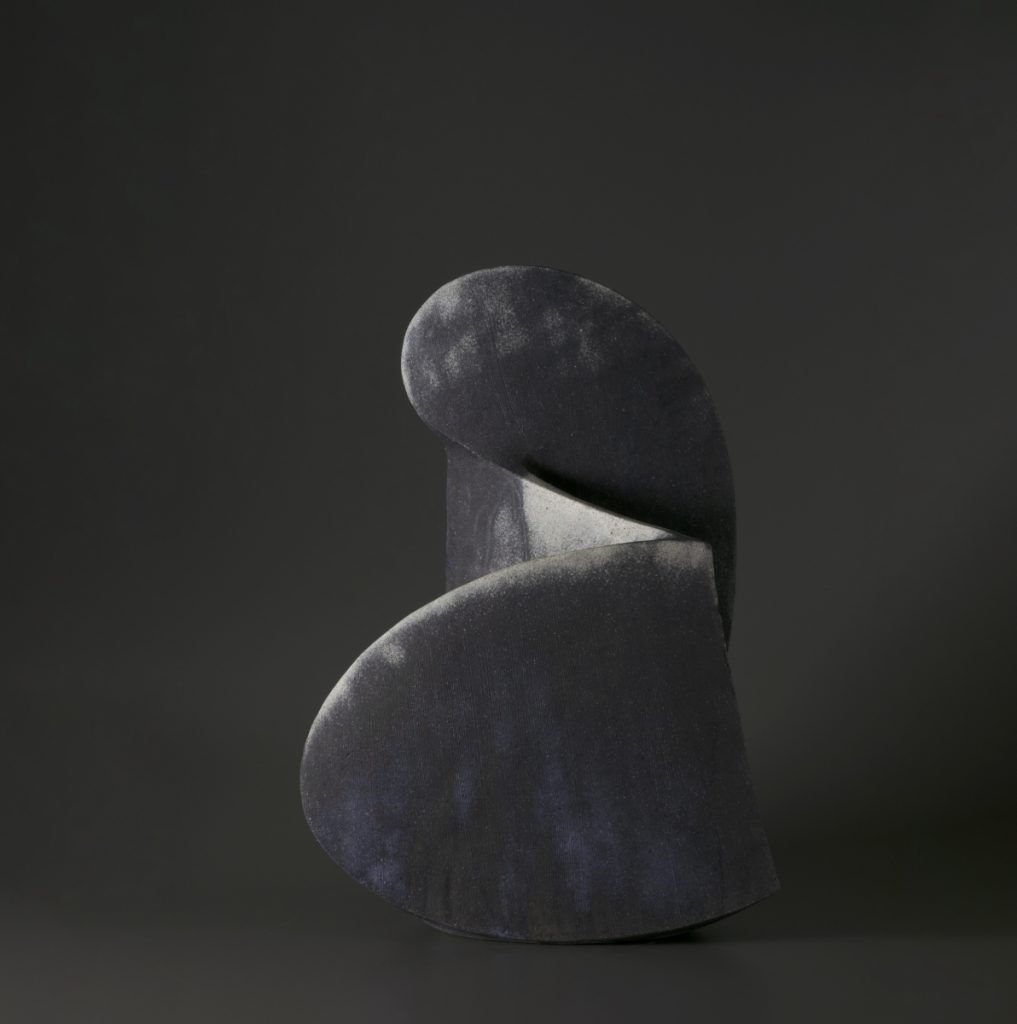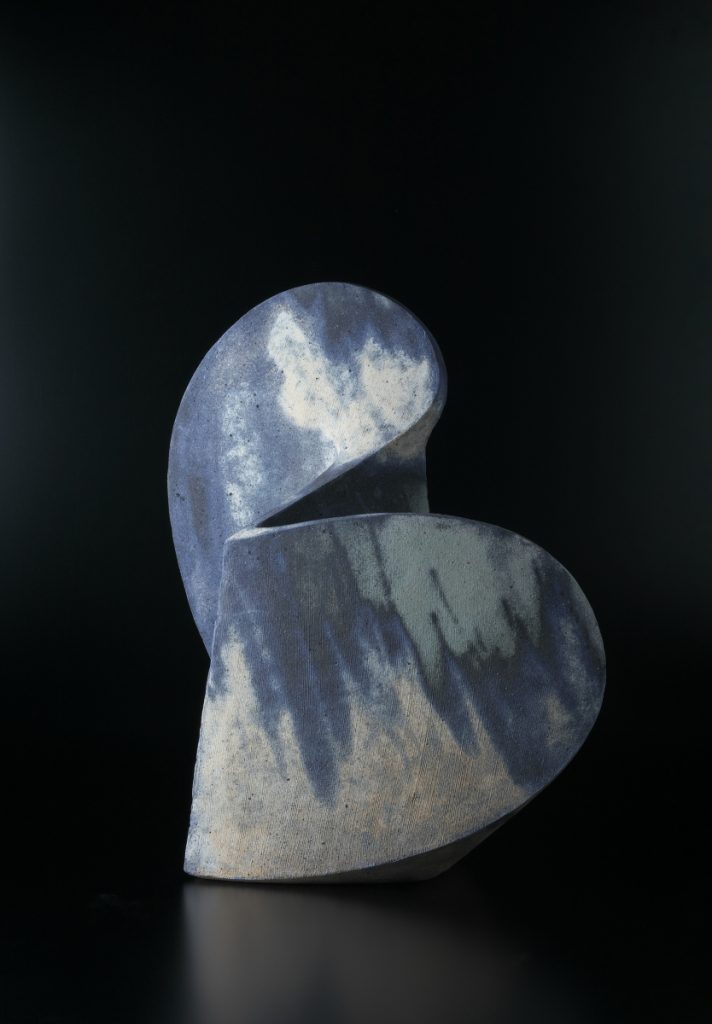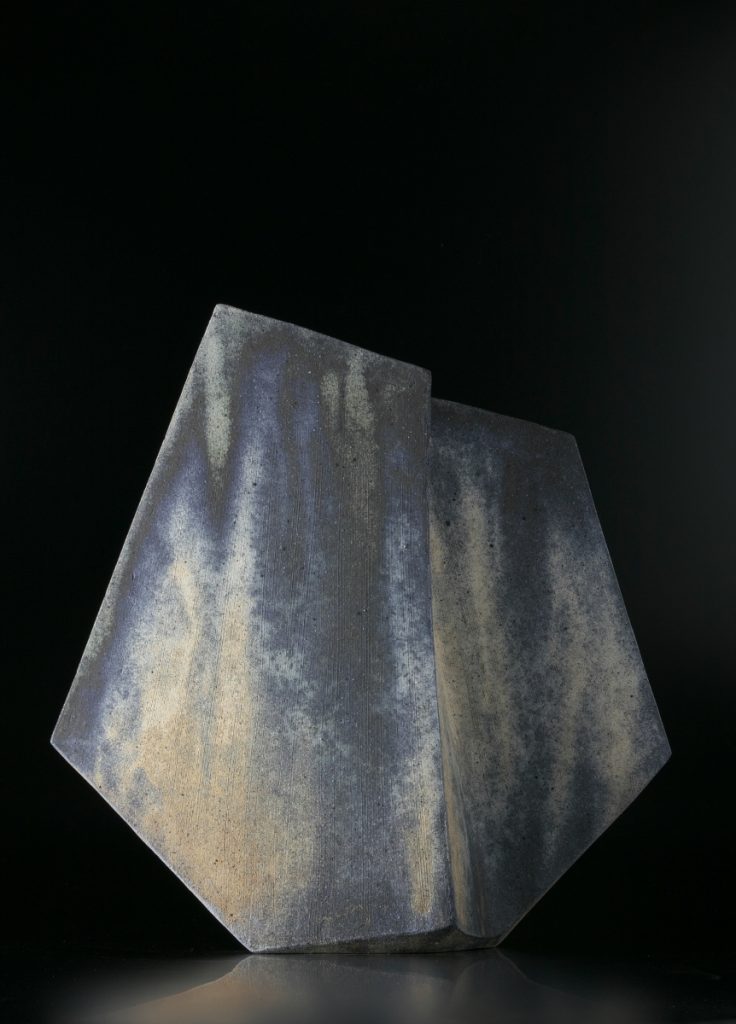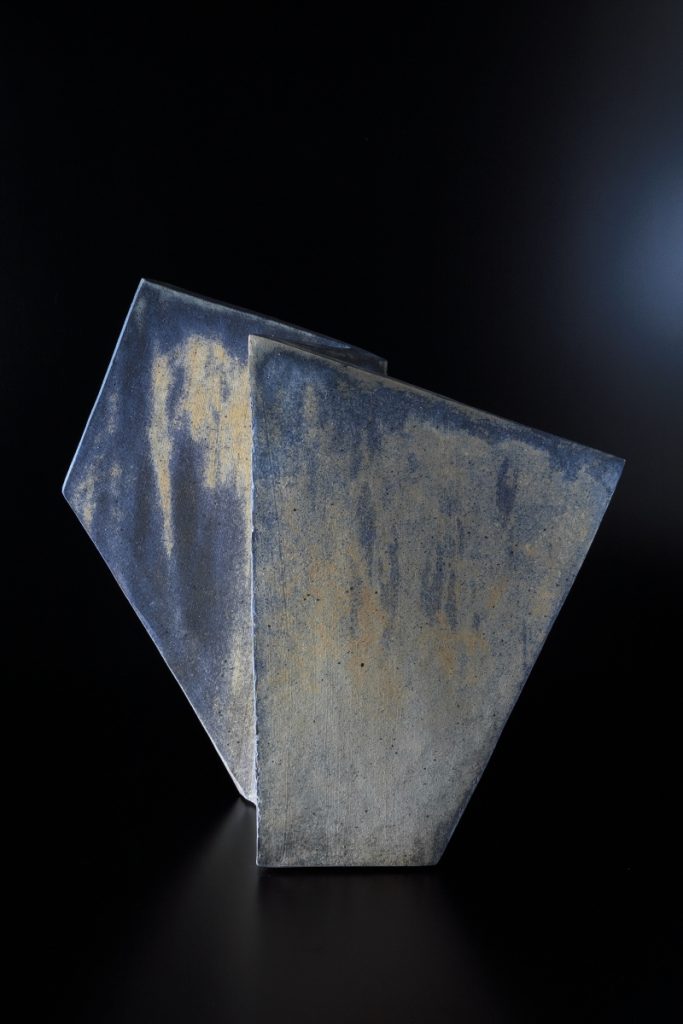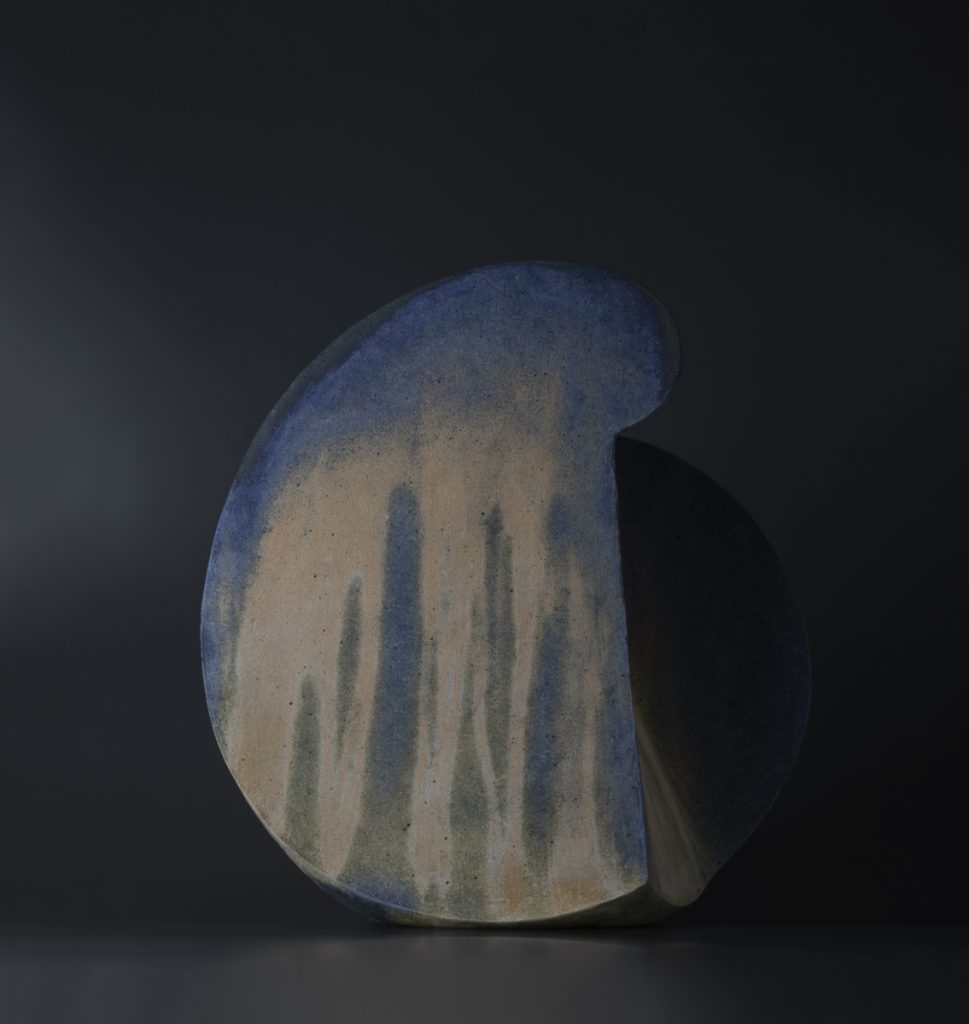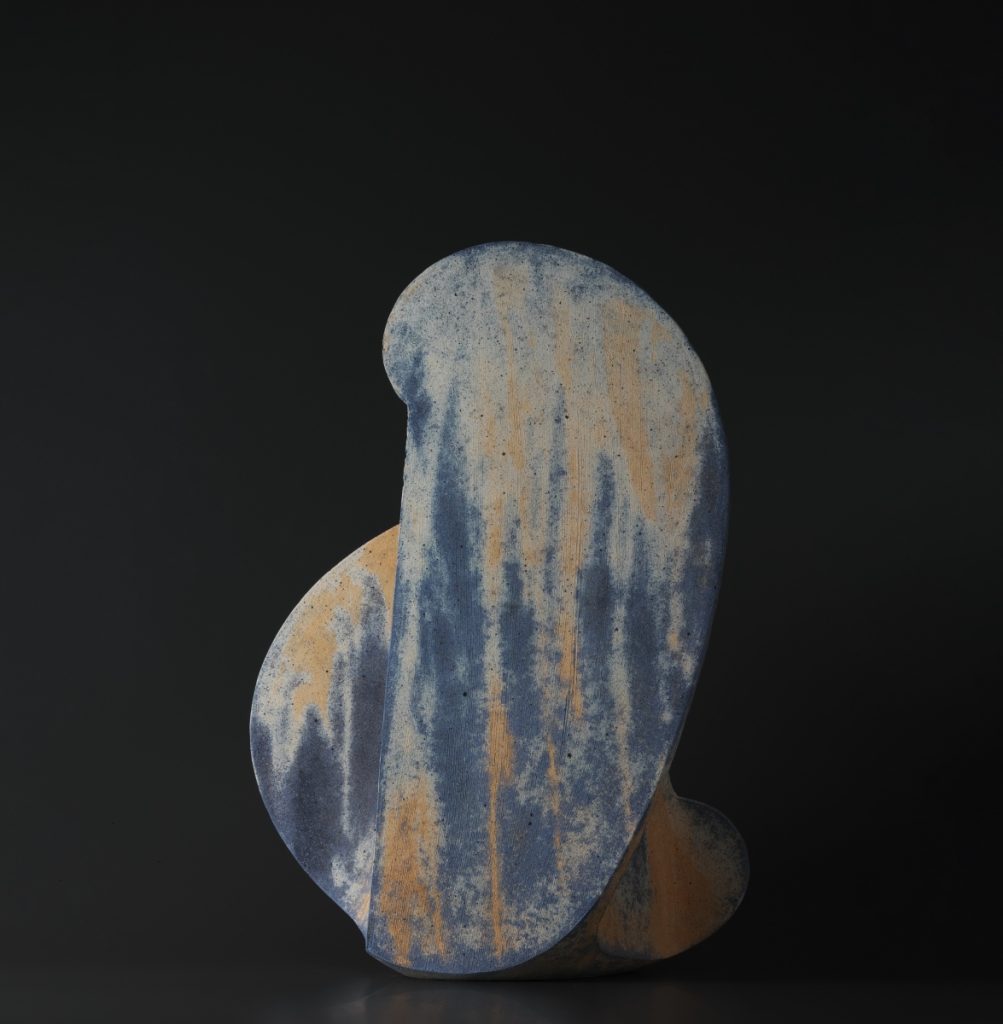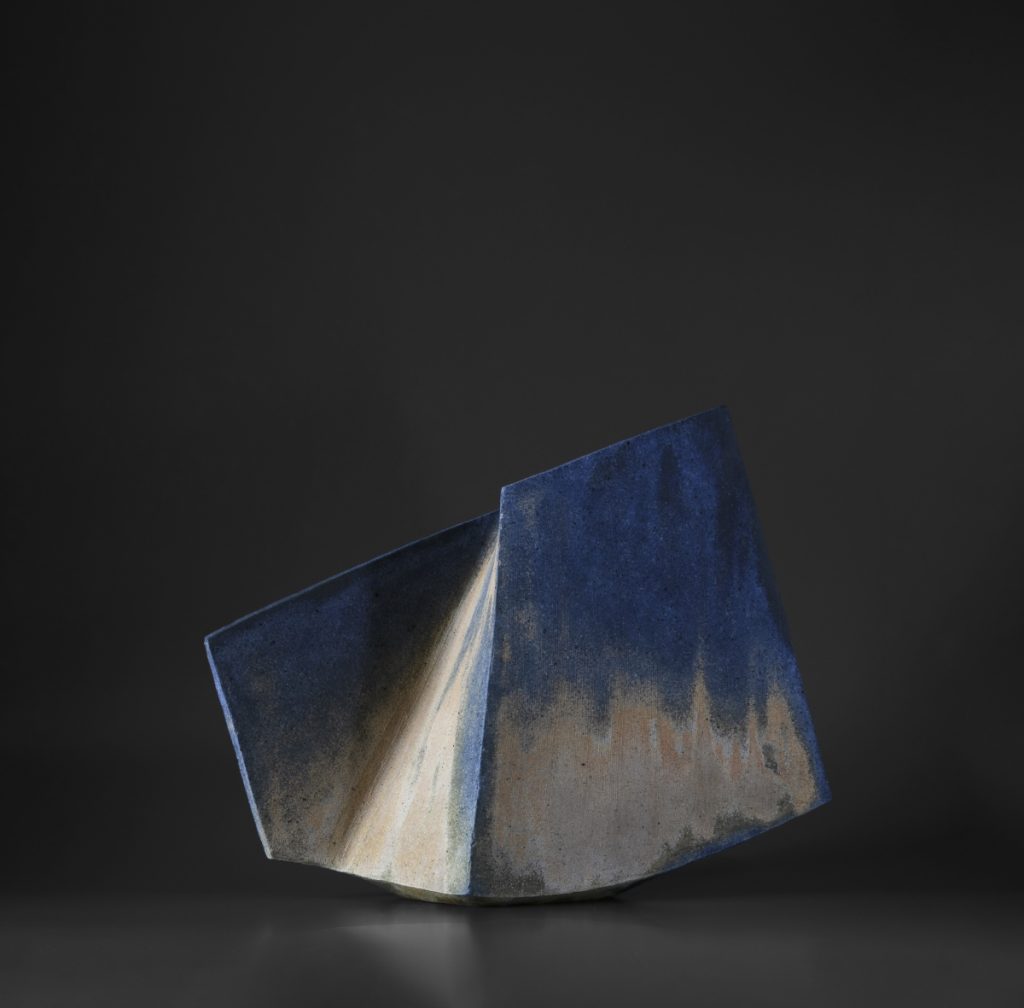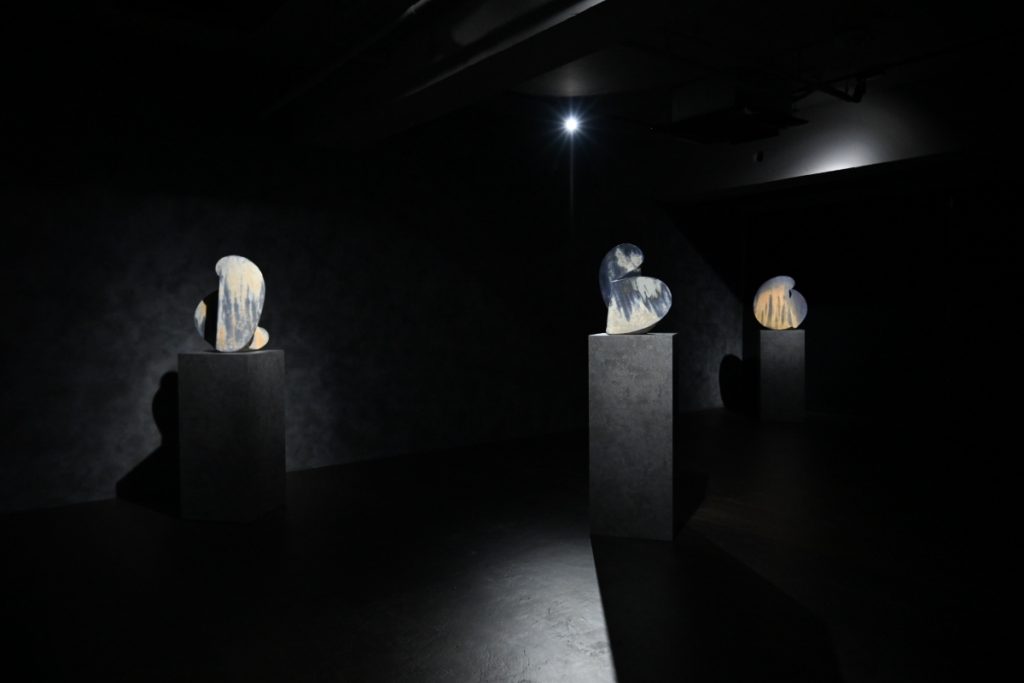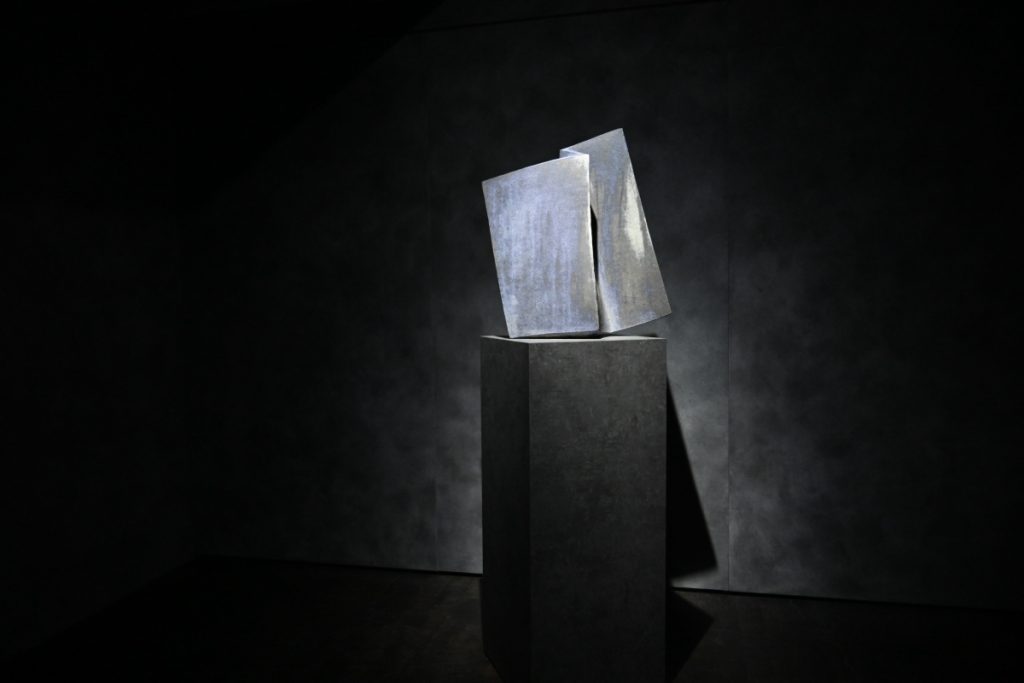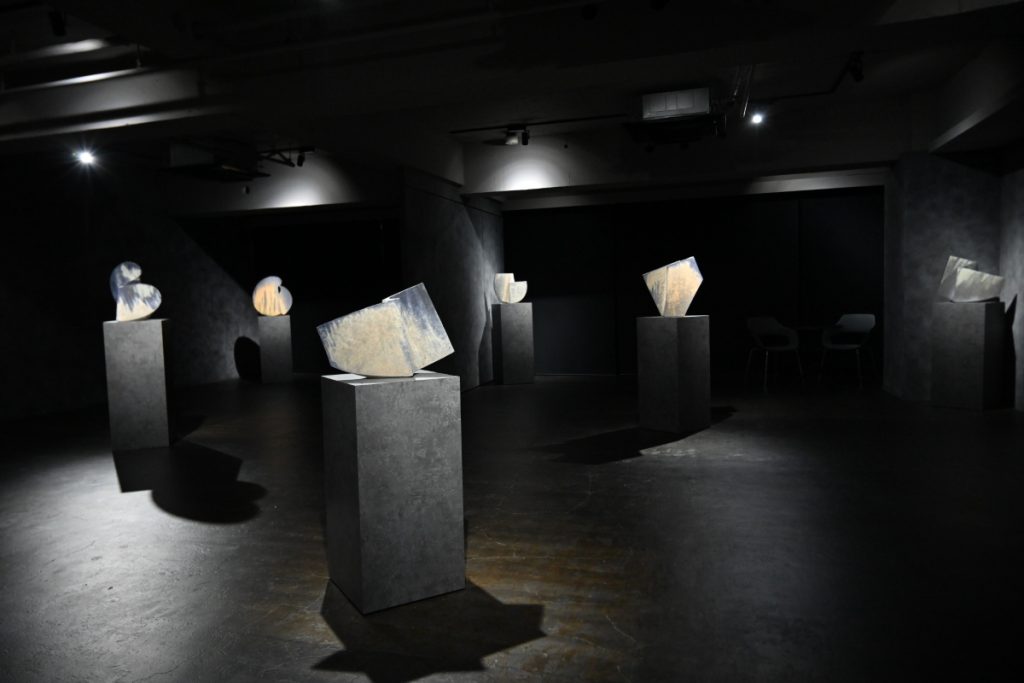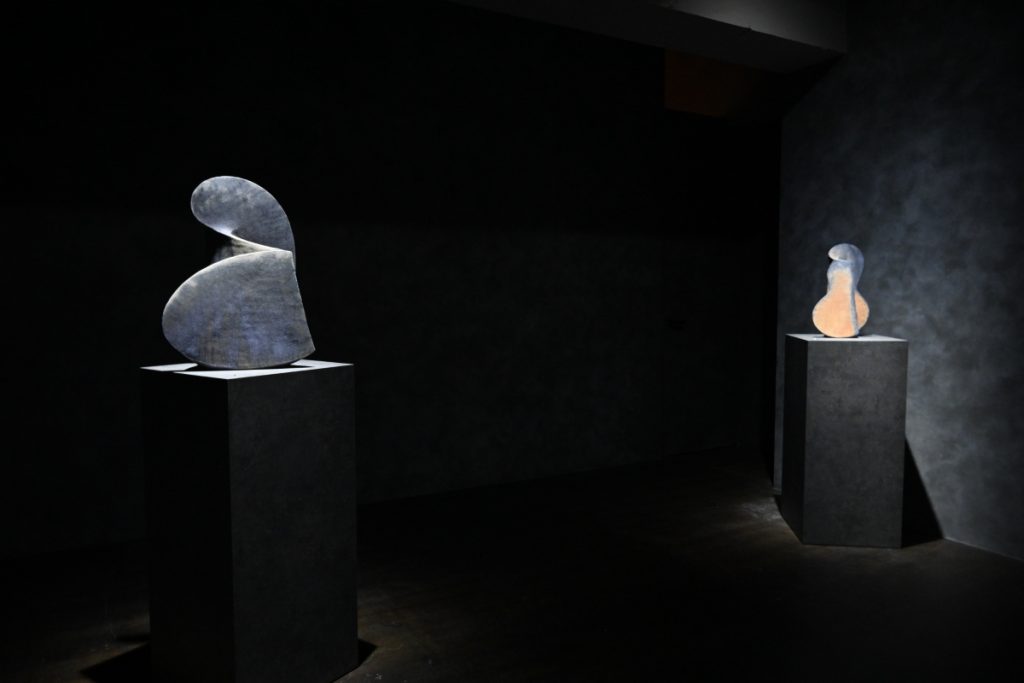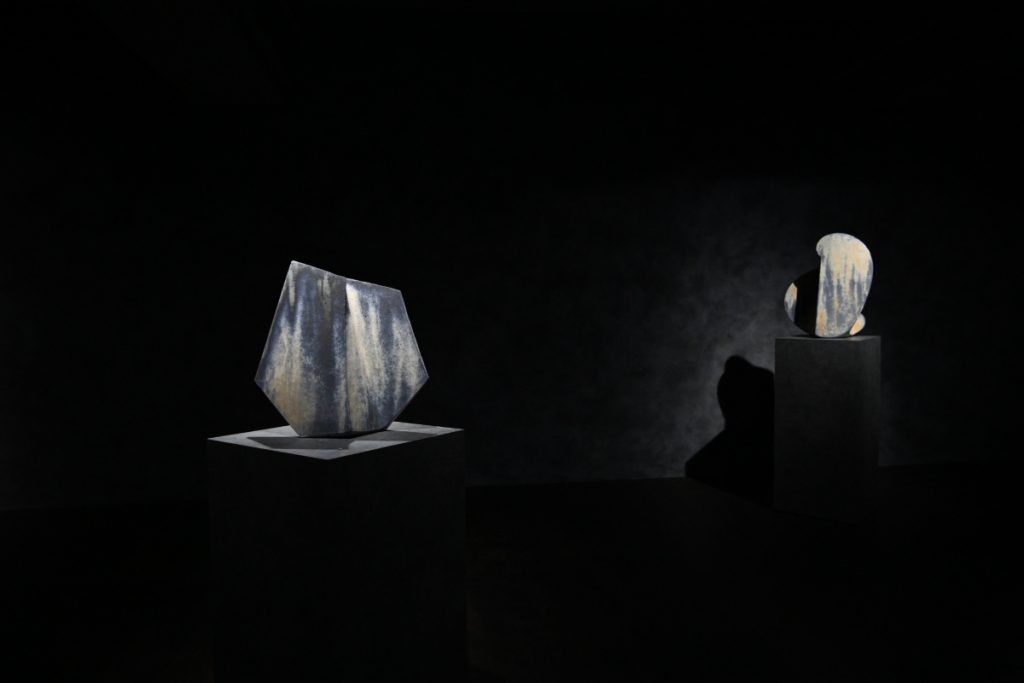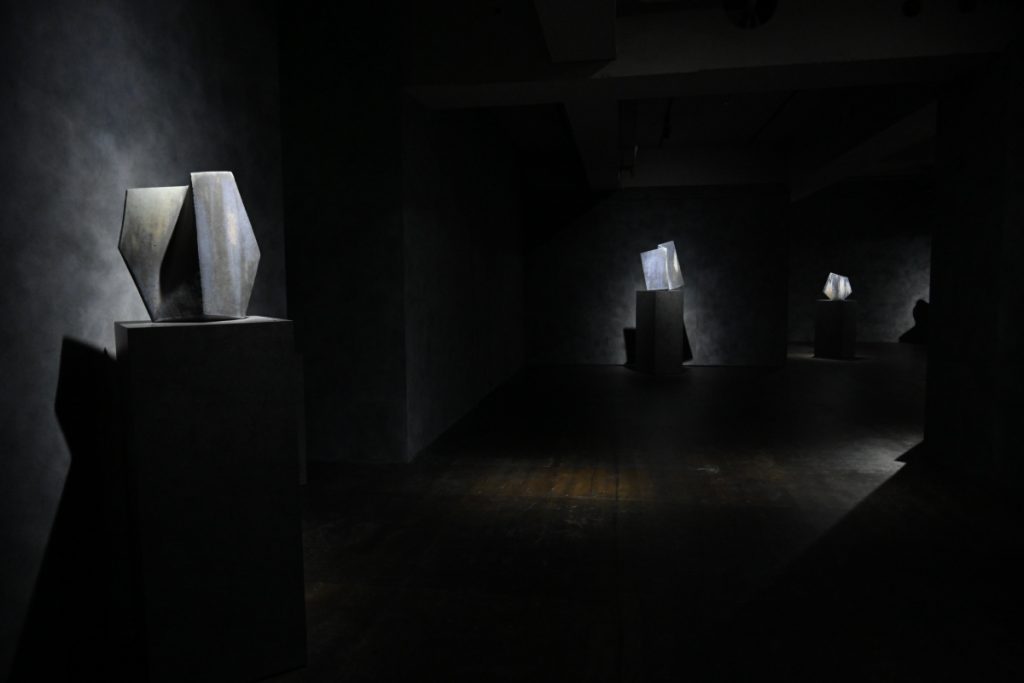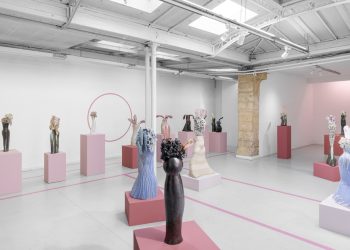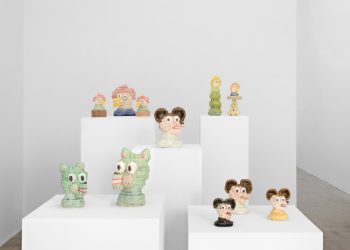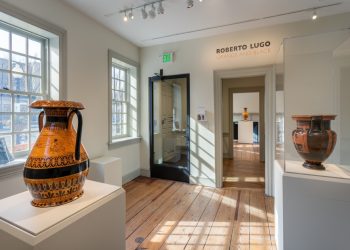Sei (Awakening) by Ken Mihara is on view at A Lighthouse called Kanata, Tokyo
September 5-26, 2020
Pristine forests, rugged ravines, gentle rivers and quiet mountains. Such are the landscapes that artist Ken Mihara (1958- ) witnessed as a child, growing up in the majestic scenery of Izumo in Western Japan. With natural surroundings of great beauty, steeped in the mysticism of ancient Shinto lore, Mihara’s solemn stoneware are borne and influenced from deeply idyllic environs. His works are far more than odes to nature, however. They are, above all, a window into the artist’s soul, and are monuments of self-expression that capture and convey the Ken Mihara of yesterday, today, and tomorrow.
No man can step into the same river twice. Likewise, Mihara introduces new forms every three to four years, thereby abandoning entire bodies of work, no matter how popular. Mihara’s sculptures must change because he himself has changed, much like the changing of the seasons.
Kigen (Genesis). Kodoh (Pulse). Kei (Mindscape) and Kuon (Aetus). Mihara’s 4K’s, created from 2007 to 2020, mirrored the fluorescence of the artist himself, and serve as storied testaments to why over forty museums have acquired this body of work over the past 13 years. These poems in clay have captivated a global audience, propelling the artist to be one of the most soughtafter artists within contemporary Japanese ceramics. And it is with the unveiling of each new series that a global audience awaits with bated breath.
Yet regardless of any phase in his career, each and every Mihara work is immediately recognisable as a Mihara. It is the visceral appeal of his clay flavour, the almost Zen-like presence that brim from his silhouettes, that are unmistakable for any other artist, and which have not changed throughout the years.
The artist does not sketch, nor does he make maquettes. Rather, Mihara allows his hands to “start a conversation with clay,” and it is through this meandering dialogue that Mihara discovers his heralded forms. He has always preferred the ambiguity, the uncertainty, and more importantly, the unpredictability of the technique of hand-coiling, and through these silent conversations, Mihara not only finds form, but himself.
Similarly, Mihara’s sculptures do not use any glaze, ash or slip. Instead, each landscape of colour pours from the clay itself through multiple gas-kiln firings of great intensity and length. Mihara believes the earth holds a distinct memory of colour. If one fully understands this trait, that person will be able to “unlock” the memories trapped within clay, thereby revealing kaleidoscopes of colours, simply by the way in which it is fired. Yet Mihara takes no data, and simply controls his kiln fires based on memory alone.
This catalogue marks the debut of Mihara’s new series Sei (Awakening), wherein three-dimensional objects are derived from the thematic leitmotifs of the second dimension. The variance in form and firings, the interconnectivity between exteriors and interiors, the return of stark, straight lines, and a greater penchant for the vertical can be found in his new body of work. In all honesty, I have not been this thrilled with a debut collection for some time, and unequivocal, it can be said that Ken Mihara is working at the very height of his powers. I hope you will agree as you look within these pages.
Lastly, this exhibition commemorates the unveiling of Yufuku Gallery’s new incarnation, A Lighthouse called Kanata. How fitting to know that the birth of Sei coincides with the birth of Kanata. Despite the challenging nature of this present day and age, I hope you will be able to experience and bear witness to this beautiful Mihara exhibition, whether it is in person at our Tokyo gallery, or through a virtual visitation via our website.
Either way, all of us at A Lighthouse called Kanata sincerely look forward to welcoming you to Mihara-san’s latest exhibition. And until the day we meet again, we wish you much peace, happiness and good health in this brave new world.
Wahei Aoyama, Owner of A Lighthouse called Kanata
Contact
+81-3-5411-2900
info@lighthouse-kanata.com
Address
Kasumicho Terrace 6F
3-24-20 Nishi-Azabu
Minato-ku, Tokyo, Japan 106-0031
Photos courtesy of A Lighthouse called Kanata


